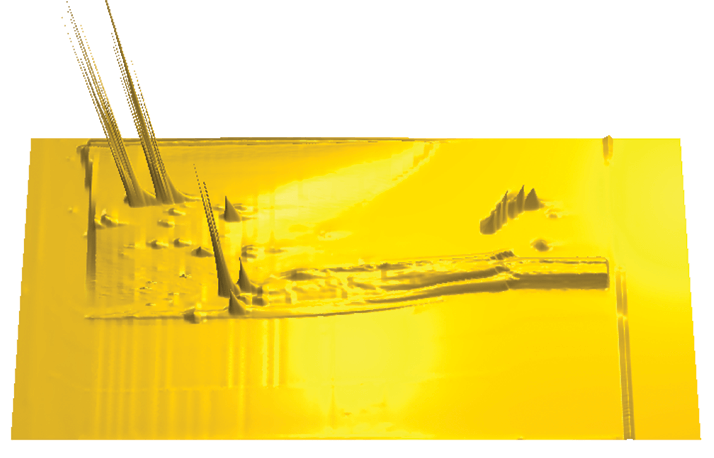Abstract
Comprehensive two-dimensional liquid chromatography (LC×LC) using the Agilent 1290 Infinity 2D-LC Solution with DAD and MS detection is applied for the analysis of citrus oils. The developed method uses normal phase liquid chromatography in the first dimension and reversed-phase liquid chromatography in the second dimension. This combination provides good orthogonality and is valuable for profiling various citrus oils. The method also enables the detection of (potentially) carcinogenic furocoumarins in citrus oil samples.


Introduction
Citrus oils are applied in numerous consumer products such as cosmetics, sun protection and bronzing formulations, food flavoring, and so forth. They are generally extracted from fresh citrus peel by mechanical cold-pressing. These oils contain signifi cant amounts of psoralens (lemon oils), methoxylated flavonones, and flavones (orange oils). A specific species of psoralens, namely furocoumarins, have been identified as photomutagenic and photocarcinogenic products. The International Agency for Research on Cancer (IARC) has classified 5-methoxypsoralen, (5-MOP, bergapten) and 8-methoxypsoralen, (8-MOP, xanthotoxin) when combined with UV radiation as group 2A (probably carcinogenic to humans) and as group 1 (carcinogenic to humans) risk carcinogens, respectively. On that basis, limits have been defi ned for the presence of psoralens in cosmetics. The Commission Directive 95/34/DC of 1995 states that furocoumarines should be below 1 mg/kg (1 ppm) in sun protection and in bronzing products1,2.It is important to detect furocoumarins in the essential oils used in cosmetics. Certain furocoumarins, such as the phototoxic 5-MOP, are not always detected and the relative amounts can differ according to type, origin, and season of citrus fruit harvesting3. The analysis of such compounds in citrus oils can be done by (U)HPLC. The results have been described by the authors in Agilent Technologies Application Note 5990-4033EN4. Chromatograms of such samples can be complex, and there is only limited certainty that a small peak for a target compound (such as a furocoumarin) will be separated from other sample constituents in a wide range of sample types (citrus species, origin, blending, and so forth). Frérot and Decorzant reported that the difficulty of furocoumarin analysis in citrus oils lies in the presence of numerous products such as coumarins and flavonoids and that even the best HPLC methods will not always avoid coelution3. In order to increase the separation probability significantly, a radical increase in peak capacity is required. This can be accomplished by using comprehensive two-dimensional LC (LC×LC). The Agilent 1290 Infinity 2D-LC Solution was used to compare various citrus oils and to detect furocoumarins in such samples. A combination of normal phase LC (NPLC) in the first dimension and reversed-phase LC (RPLC) in the second dimension resulted in good orthogonality. Combining these two very different separation modes is challenging due to mobile phase incompatibility issues. However, the combination of NPLC/RPLC has previously been demonstrated for lemon and orange oil analysis5,6.This Application Note presents data on the comparison of various citrus oils and the detection of furocoumarins in these oils. On-line mass spectroscopic detection was also used with 2D-LC for confirmation of the identity. A fully automated system with easy method setup, gradient development, and complete software integration was used.





